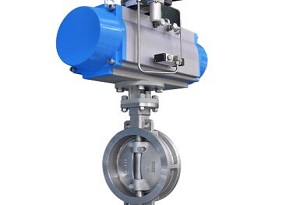Jun. 16, 2021
Ball Valves
If installed and maintained correctly, ball valves of all materials and seat types are easy to use and have a long service life.
Storage conditions
In order to protect the valve seat and seal, do not open the valve packaging until the valve is ready to be installed. Doing so protects the valve from dust and debris, which may eventually cause the valve seat to leak.
If it is stored for a long time, please put it in a cool, well-ventilated place. For cast steel valves, the valve body may require additional oiling to prevent corrosion.
Valve installation
The ball valve can be installed in any direction.
Check the material of the ball valve body, valve seat, and ball valve before installation. Ensure that there are no defects due to storage or transportation.
Verify that the rated pressure of the valve meets the application requirements.
Verify that the temperature rating of the valve meets the application requirements.
Complete all welding work before installing the valve. Before installing the ball valve, make sure that the flange has cooled to ambient temperature.
Before installation, make sure that there is no welding residue, waste, rust, and other sundries in the pipeline. If necessary, wash with water or mild detergent.
Clean the flange or pipe thread surface in contact with the ball valve to ensure that there is no rust and debris. If necessary, wash with water or mild detergent.
Make sure that the flange is not warped or the ball valve is not centered relative to the flange.
Support the valve when necessary to reduce the load on the piping (this is important for larger valves and actuator components).
Tighten the bolts on the flange valve, one at a time, in stages, so that even if pressure is applied, a seal will be formed between the valve and the flange.
Once the installation is complete, operate the valve several times to ensure that it is protected from impact, and operate it through its full 90-degree rotation.
Field test
The ball valve can only withstand the rated pressure. Testing pressures above the rated working pressure in the closed position may cause damage to the valve.
When the ball is in the open position, the pipeline can test the hydrostatic pressure of the valve.
Seat leakage may occur in the external material between the valve seat and the ball. If this happens, open the valve 10 to 15 degrees to obtain a high-speed flushing effect. If necessary, close and repeat.
Valve seat leakage may be caused by the rotational displacement of the ball relative to the position of the valve body. If necessary, readjust the closing stop on the actuator/gearbox.
Operating
Do not use the valve at a pressure exceeding the working pressure of the valve.
If the valve is stuck between open and closed, check the operation of the actuator. If necessary, remove the actuator and manually operate the valve to find the fault. If necessary, disassemble and check the valve for foreign objects.
Excessive torque of the actuator will damage the internal parts of the valve.
Maintenance
If it is not used frequently, the valve is cycled once a month or more.
Relieve the system pressure before servicing the valve.
To remove from the pipe, reverse the order of installation.
Replace the seat and seal by removing the endplate. When the ball is closed, carefully push out the end seat and the ball. To avoid damaging the polished ball surface, use a soft cleaning cloth to keep it. Push the drive valve stem from the cavity to expose the valve stem seal. Reinstall the seal, valve stem, ball, valve seat, and endplate. Use only approved lubrication on the seals.
We are ball valve suppliers. Please feel free to contact us if you are interested in our products.

Ball valve
Previous: Butterfly Valve Introduction Guide
Next: Ball Valve vs Gate Valve
Headquarter Add.: SUPCON Park, No.309 Liuhe Road, Binjiang District, Hangzhou, 310053, China.
Tel.: +86 571 8111 9774
Fax: +86 571 8111 9737
E-mail: [email protected]
